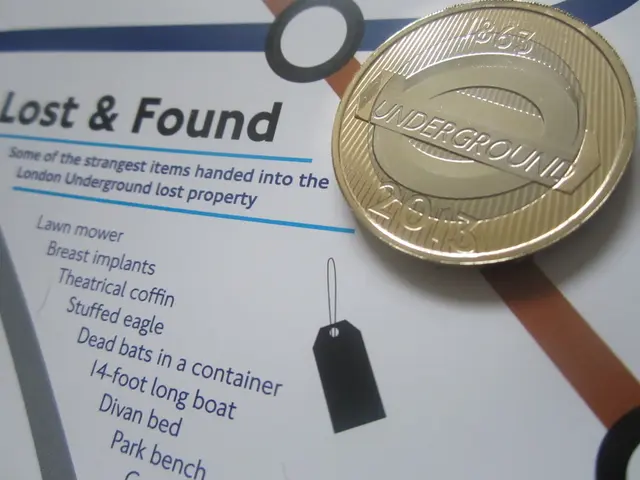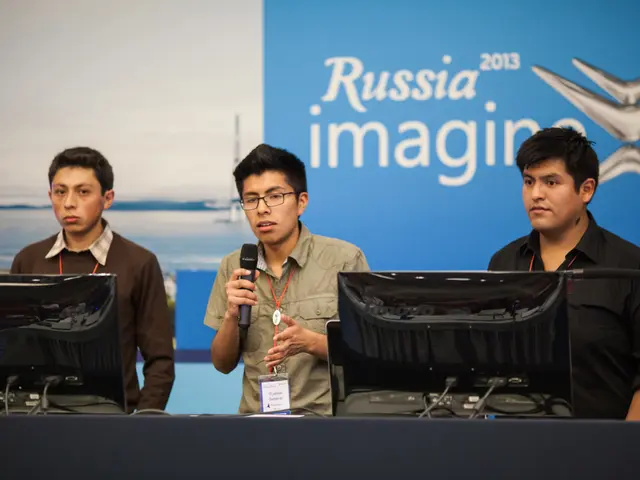Assessing Mine Safety: Examining Roles, Obstacles, and Remedies of Mine Monitoring Bodies
Mine inspectorates, the regulatory bodies responsible for enforcing safety regulations in the mining industry, are adapting to the modern world by embracing technology and updating their inspection methods.
These regulatory bodies utilize a variety of tools to monitor workers' health and safety in real-time. Wearable technology, for instance, is now commonplace, providing continuous data on workers' conditions. Advanced technologies like drones and Internet of Things (IoT) sensors are also employed for safer inspections, allowing for remote monitoring and real-time analysis of potential hazards.
However, many mine inspectorates face challenges in their mission to ensure safety. Funding and resources are often inadequate, making it difficult to carry out inspections effectively and enforce safety regulations. Additionally, the specialized skills and knowledge required for effective inspections are not always available.
To address these challenges, mine inspectorates are investing in technology to enhance their efficiency and effectiveness. AI-powered software, for example, is used to analyze data and identify safety risks. This technology can help mine inspectorates make more informed decisions and take prompt action when necessary.
Mine inspectorates also conduct regular inspections to identify potential hazards and risks in mining operations. They have the authority to impose penalties and fines on mining companies that violate safety regulations. In the event of accidents or incidents, mine inspectorates investigate to determine their causes and prevent similar occurrences.
Education and training are also key components of mine inspectorates' work. They provide training and education to mining companies and workers on safety regulations and best practices. Virtual reality training is even used to simulate hazardous mining scenarios safely, improving worker readiness.
Collaboration with other regulatory bodies is also crucial. By sharing resources and expertise, mine inspectorates can ensure they are up-to-date on the latest safety regulations and technologies.
The mining industry is constantly evolving, and new technologies are emerging that can pose new safety risks. Mine inspectorates must keep up with these changes to identify and mitigate new risks. By adopting a combination of regulatory updates, enhanced examination protocols, stakeholder engagement, and integration of advanced technologies, mine inspectorates are working to overcome challenges and enhance mining safety.
[1] Enhanced Mine Inspection Rules: https://www.msha.gov/Regulations-and-Standards/Mining-Safety-and-Health-Standards/Respirable-Crystalline-Silica-Rule/ [2] Modernization and Reduced Compliance Burden: https://www.msha.gov/Policy-and-Guidance/Guidance/Modernization-of-the-Mine-Safety-and-Health-Standards-for-Underground-Coal-Mines-Regarding-Flame-Safety-Lamps-and-Trolley-and-Pillar-Mining-Mandates/ [3] Real-Time Monitoring and IoT: https://www.msha.gov/Policy-and-Guidance/Guidance/Underground-Mining-Regulations-for-Real-Time-Monitoring-of-Blasting-Vibrations-Airblast-Overpressure-and-Fragmentation-Hazards/ [4] Comprehensive Training Supported by Technology: https://www.msha.gov/Policy-and-Guidance/Guidance/Virtual-Reality-Training-for-Mining-Operations/ [5] Digital Environmental, Health, and Safety (EHS) Management Platforms: https://www.msha.gov/Policy-and-Guidance/Guidance/Digital-Environmental-Health-and-Safety-Management-Systems-for-Mining-Operations/
- To enhance their safety monitoring capabilities, mine inspectorates are incorporating advanced technologies like AI-powered software for data analysis and identification of safety risks, as seen in the Digital Environmental, Health, and Safety (EHS) Management Platforms (link 5).
- In addition to regular inspections and fines for safety violations, mine inspectorates are investing in industry-specific finance strategies to ensure they have adequate resources for more effective and efficient examinations, aligning with the Modernization and Reduced Compliance Burden (link 2).




